Apple bobbing is a traditional Halloween/Autumn game with some interesting science and history behind it.
We used a large container filled to near the top with water. I removed the stalks so they didn't poke anyone in the face and asked the children to try to pick up the apple with their teeth.
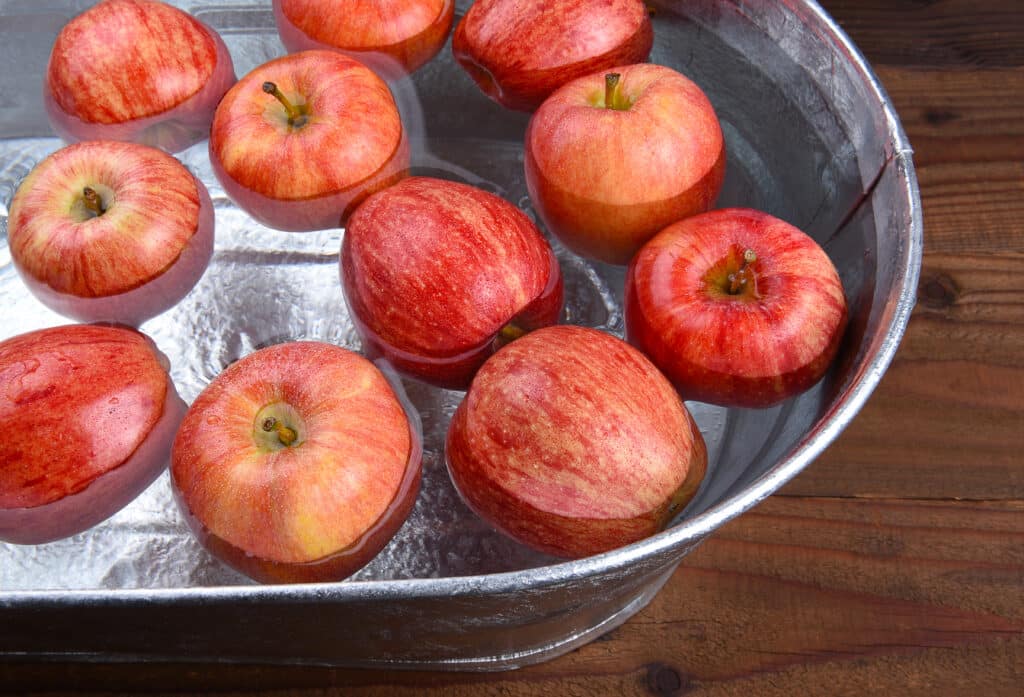
The first time everyone tried, they pushed the apple down when trying to bite it, and then it bobbed up again to the surface. My 4-year-old cheated and held it to get a bite. After that, it was much easier to get a grip on the apple!
Why is apple bobbing so hard?
Whether an object floats or sinks depends on its density. Density is how tightly packed the material inside an object is. Just because something is heavy does not mean it will sink. For example, ships are very heavy but not very dense, so they float.
For an object to sink, it must be more dense than the water. The apple is less dense than water, and so bobs back up to the surface after being pushed down.
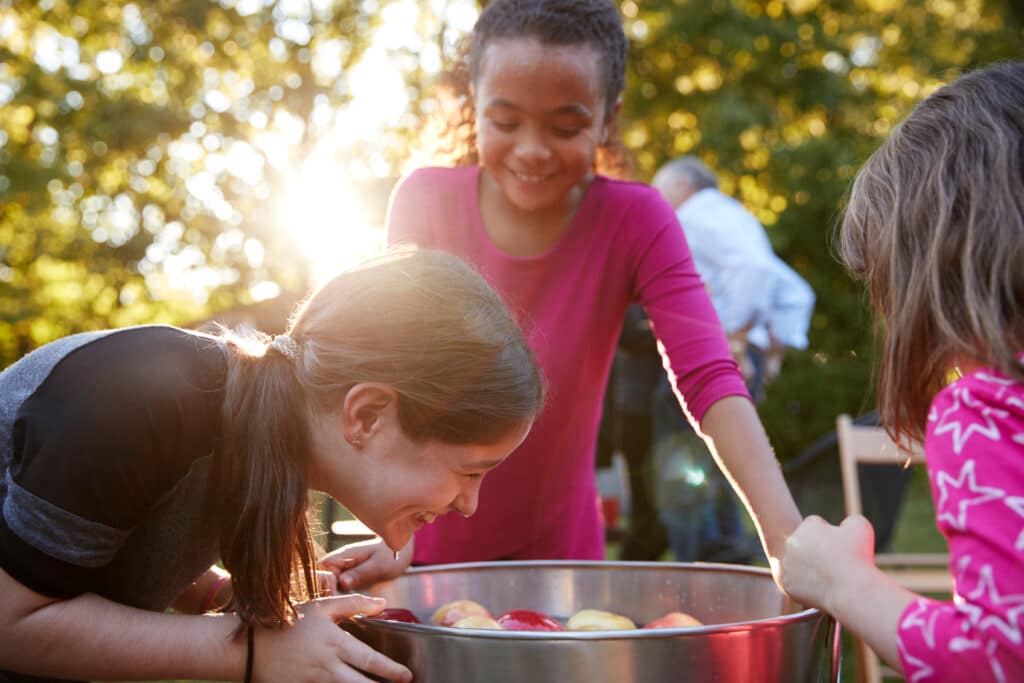
More apple bobbing ideas
Try different kinds of apples. One idea to to set up an investigation to find out whether waxy apples are easier or harder to grip. What if you chop the apples in half?
Supervise children during this activity
More science with apples
Learn about filtering by making apple cider.
Find out how many pennies it takes to pull an apple up a ramp with Kids Minds.
Discover how to stop apples rotting with salt and vinegar.
Read about the history of apple bobbing.
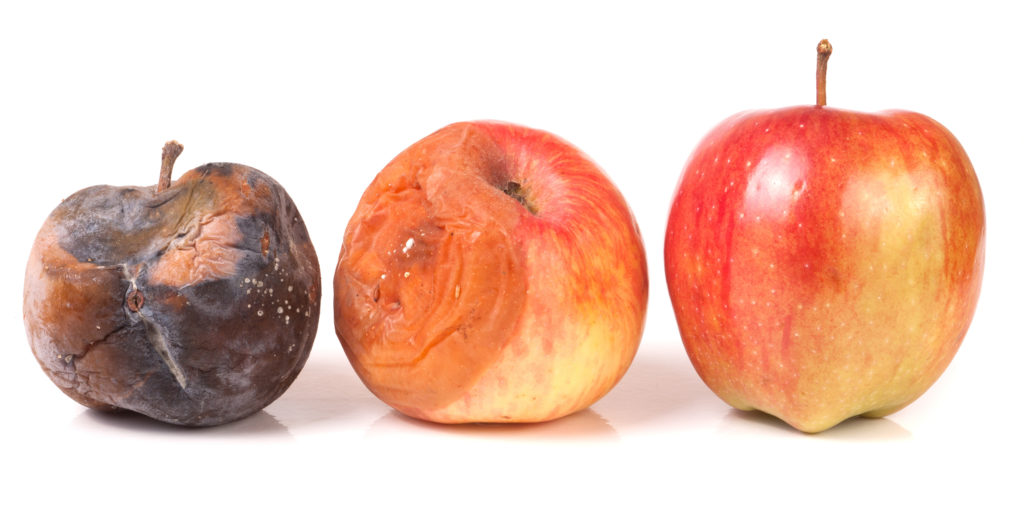
Science concepts
Density
Floating
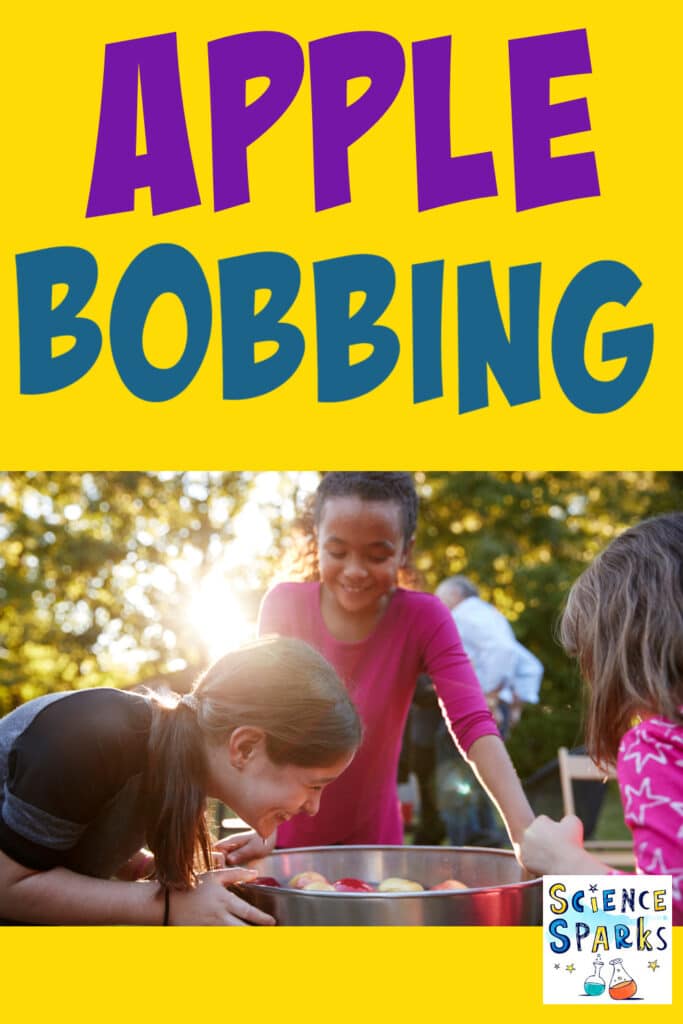
Last Updated on October 5, 2023 by Emma Vanstone

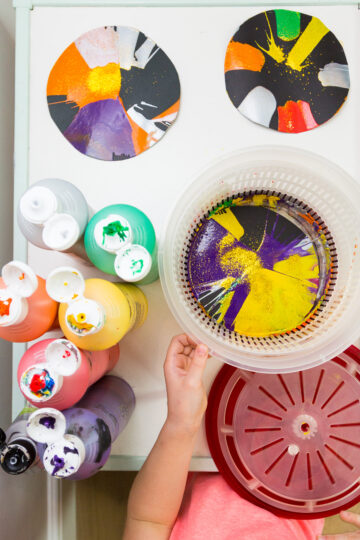
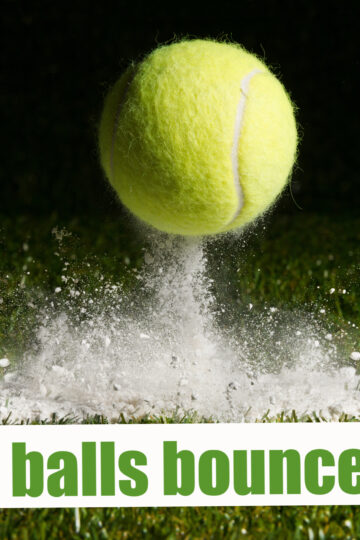
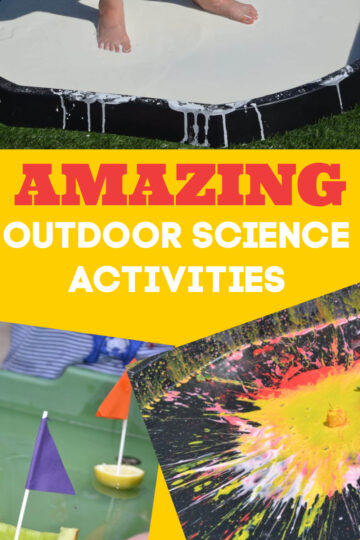
Lucy says
I tried this with grapes once - they sink!
Two alternative ideas for you that work better for younger cildren:
1: set fruit (or Haribo) in shallow trays of jelly instead. Less of a challenge for little ones and they can always get the fruit out of the "slime" with their fingers if they dont want to put their faces in!
2: pile a few cups of flour on to a tea plate and set a big marshmallow on the top, pushing it into the flour slightly. The children then try to pick it out with their teeth and inevitably end up with flour on their nose or (if they are brave) ghostly faces!
3: hang pieces of apple up on a washing line - doughnuts and party rings work well too for this - children have to jump rather than bob for apples
pat says
Always great ideas! Thanks!
Kendall says
Fun!
maggy, red ted art says
Trust you to find the Science in these traditional activities. Wonderful as ever! Science really is all around us! 🙂
Thanks for sharing on Kids Get Crafty!
Maggy
Rohan Singh says
Once I have tried same type of game at home when I was little with friends, it was fun but I was very little to think about the reason behind the science of this.